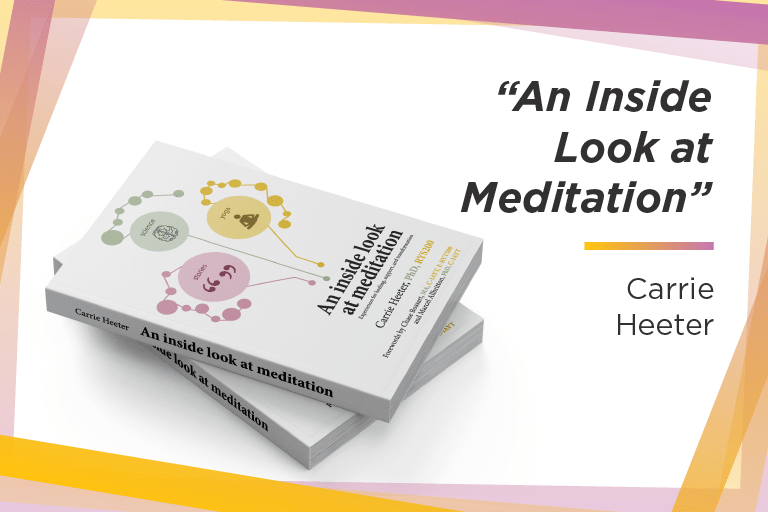After retiring from the Department of Media and Information in May 2022, Carrie Heeter set out to put pen to paper — or rather, fingers to keyboard — and created an informative, visually descriptive and encouraging book on meditation practices for new and experienced meditators and yoga enthusiasts. With the help of retired Professor of Journalism, Darcy Drew Greene, Heeter was able to produce An Inside Look at Meditation: Experiences for healing, support and transformation.
Heeter has been a Spartan since 1974, starting as an undergraduate student studying communication. She later became founder and director of the Communication Technology Laboratory (now known as the GEL Lab) on campus from 1980 to 2005. In 1984, Heeter completed her Ph.D. in mass media in what is now known as the Information and Media doctorate program, afterward becoming an official faculty member in the College of Communication Arts and Sciences.
As a professor of media and information, Heeter taught courses about foundations of serious games and human-centered experience design, in addition to conducting research on cyber-meditation for health and well-being. She was most interested in designing innovative applications of technology and studying user experiences. She found that her newly discovered personal passion for meditation had a seamless way of intersecting with her academic interests as her work has always centered around designing meaningful experiences.
“I’ve designed interactive television, virtual reality, apps, games and learning systems,” said Heeter. “I encountered yoga-based meditation where you direct your attention toward a meditation object (such as a large, vibrant tree, the full moon, or an eagle) and I was hooked.”
Heeter noticed a link between designing meditation practices and designing games, virtual reality, and other technology-based experiences — being heavily trained and skilled in both.
“This approach to meditation is like a game or a virtual reality experience (and it is carefully designed to benefit mind and body). The technology needed is your human system — your mind and your body. So, meditation was a natural step in my 40-year trajectory as an academic who designs and studies experiences.”
An Inside Look at Meditation incorporates three main color-coded sections, 37 “big idea” pages highlighting quotes from yoga experts and scientists, 89 stories about people’s meditation experiences, 40 examples of practices Heeter has taught, and myriad of helpful visual aids to accompany respective sections, explanations and chapters. The color-coded sections are green (for yoga and science), yellow (for demonstrating how meditation is a designed experience) and pink (for yoga stories focusing on support, healing and transformation). The book is designed to be easily navigated, accessible for all readers (no matter what their experience level is in meditation) and an enjoyable experience overall.
“Most two-page spreads contain a headline and a complete idea, so it is easy to skim and jump around as a reader. I’ve included tons of images, photos and diagrams,” said Heeter.
Heeter wrote and designed the first draft of the book completely in Microsoft PowerPoint, using a 6 by 9 inch template to match the page size of tradebooks. She did this so that as she wrote content and created graphics, she would know exactly how much content fit on each page. This helps explains its very organized and particular structure.
Next, Heeter collaborated with Greene to translate the content into a book, inventing colorful, appealing, stylistically consistent approaches to presenting different kinds of page content. Greene used Adobe InDesign as the container for the book, expertly refining the formatting for text-heavy pages and bringing in full color pages and graphics directly from Heeter’s PowerPoint.
“I felt like I was creating software. Darcy and I went through nine months of iterations to arrive at the final product. It’s a very unusual book.”
Their unique approach to create this “unusual” final product includes notable design elements with very distinctive concepts for meditation and well-being, creating a remarkable reading experience. Heeter’s ability to join two unlikely concepts together, like user experience and meditation, in such a personalized way is remarkable.
She hopes that her readers will be inspired to pursue their own personal and transformative journeys in their meditative practices, just like she did.
“My experiences with meditation are more mind-blowingly cool than any science or yoga books I have read. I wrote this book because I want to share the joy and possibility of the kind of meditation I study, practice and design.”
An Inside Look at Meditation is available for purchase through Amazon, or a free digital copy can be downloaded via Heeter’s company website.
By Casey Halas
